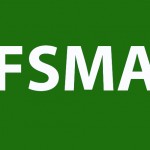FSMA is a major reform of the U.S. food safety laws. It shifts the emphasis for food safety to preventing contamination during manufacture instead of just responding to it. As part of the implementation process, the FDA will enforce these new rules during routine random inspections at food manufacturing sites. With such a significant change in emphasis, Shawn K. Stevens of Food Industry Counsel LLC, released an FDA Inspection Checklist. The checklist is designed to help food and beverage manufacturers to prepare for an agency inspection and to ensure they have the required controls and checks in place. Before we look in more detail at the checklist, it is worth reviewing some of the underlying requirements.
Some Basic Requirements
One of the fundamental requirements of FSMA is the establishment of an environmental monitoring program at each facility. It defines the testing protocols for appropriate microorganisms and verifies that the preventative measures undertaken are effective. Clear procedures and systems are required to identify the test microorganisms most suited to the risks in their systems. They need procedures to identify the locations from which samples will be collected and the number of sites to be sampled, since the number and location must be adequate to determine whether the preventative controls are effective. They also need to identify the timing and frequency for collecting and testing samples. The tests to be conducted must be specified, including the analytical methods used and the corrective action procedures in the event that testing detects an environmental pathogen or an indicating organism. Just as importantly, all of the data associated with this testing program needs to both be recorded and accessible for audit purposes.
Acquiring and Managing Environmental Monitoring Data
Any environmental monitoring program will come at a cost to the food manufacturer. While the program itself will need to be set up by experts in the field, much of the implementation can be carried out by lesser-qualified technicians. So a key aspect is having the tools to implement a program where the most effective use is made of each resource available, as this keeps costs down. In principle, one such tool is a Laboratory Information Management System (LIMS). The use of a LIMS is commonplace in QA Labs to record and monitor laboratory samples, tests and results in order to simplify and automate processes and procedures. There is a variety of ways in which a LIMS could facilitate the environmental monitoring process to enable best practice even by non-specialist staff. For example, analysis can be simplified if each set of test results can be automatically linked to respective sampling points in the facility. Out-of-specification test results could be linked to corrective and preventive actions (CAPA). Test failures at a particular sampling point could be used to trigger more frequent testing at that point according to pre-set criteria.
- The data management capabilities within a LIMS make it possible to:
- Implement data management strategies that increase security and availability of data
- Eliminate manual assembly of data for analysis and audit
- Make data more useful with easy retrieval/visibility
Perhaps most importantly, a properly configured LIMS can provide a suitable framework for set-up and adjustment by the environmental monitoring expert, while reducing the expertise required to operate it on a daily basis.

FDA Inspection Checklist
This comprehensive document highlights the steps that companies need to take to prepare for the inspection process, navigate the inspection itself and respond to any criticisms arising from the inspection.
There are three main areas in the checklist where a LIMS could help satisfy FSMA requirements:
- Finalizing written food safety systems and making sure certain employees know the plans. LIMS provides the framework to set up documented food safety sampling requirements and track microbial test results over time. This facilitates recall and more detailed investigation should a sample fail.
- Well organized and maintained data, and ease of records access. LIMS should be capable of date and time stamping every entry and since it will contain all the test data over time, this can be easily recalled should the need arise. Typically a standard operating procedure would be developed, which will increase testing and start “out-of-specification” actions if abnormal microbial contamination is detected. LIMS can provide a full audit trail for all test data and produce reports showing result trends over time, highlighting variance and peaks in data.
- Proper documentation of corrective actions. In the event of failures, investigators will want to focus on the particular sample points and the “out-of-specification” actions that were initiated to investigate and resolve these failures. Typically three months of data is requested around these sample points, although up to two years’ worth of data could be requested. LIMS should allow data to be instantly pulled from the database as a report for further investigation.
FDA investigators will be most interested in what happens in the event of a failure and what learning gets incorporated into your regular regime. What happens when an out-of-specification result is obtained is the crux of preventive testing regimes. Actions might include changing sanitation methods, increasing test frequency or locations in areas of concern, segregating traffic patterns, re-training staff and so forth. Some of these actions, such as increasing test frequency, can be automated. All actions must be clearly documented, which can be done by adding appropriate records directly into the LIMS. This captures the actions that each quality improvement cycle needs in order to discover the likely root cause of any problems and how they may be avoided in the future.
All corrective actions should identify the root cause of the deviation, actions taken to prevent recurrence and, if product safety is not affected, a written conclusion (supported by factual and scientific data) that the deviation “does not create an immediate food safety issue.”
The emphasis should always be on preventive actions to remove potential points of failure before issues get into the final delivered products causing stock loss and costly recalls.
Configuring a LIMS for Environmental Monitoring
While most LIMS in principle provide the capability to handle the requirements of environmental monitoring, the system will need to be configured to do so, and this may not be a trivial exercise. The software will need to be configured to represent user requirements in terms of workflows, screen designs, menu designs, terminology, numbering schemes, report designs and much more. For many LIMS, full configuration for specific applications requires custom coding, which will require re-validation.
Once configured, LIMS can offer a practical way for food and beverage companies to document their sanitation/safety programs and instantly show written evidence of both testing and corrective actions when the FDA comes knocking.





